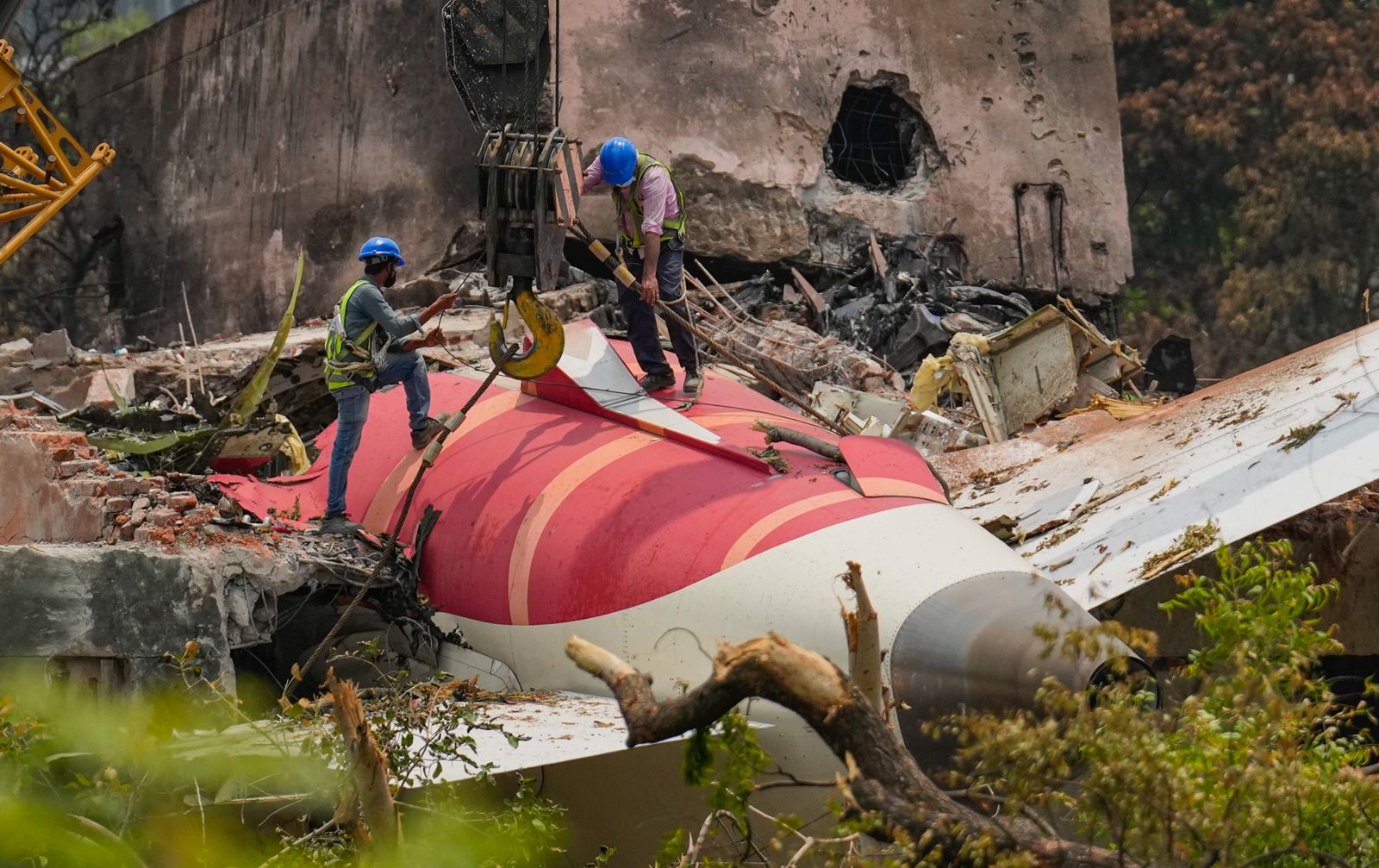India’s Aircraft Accident Investigation Bureau (AAIB) has released its preliminary report on the Air India flight AI171 crash, pointing to a cockpit fuel switch error and raising questions about pilot actions.
The London-bound Boeing 787-8 Dreamliner experienced a fatal loss of thrust just seconds into flight, with investigators now focusing on the unexpected movement of cockpit fuel switches and the subsequent loss of engine power.
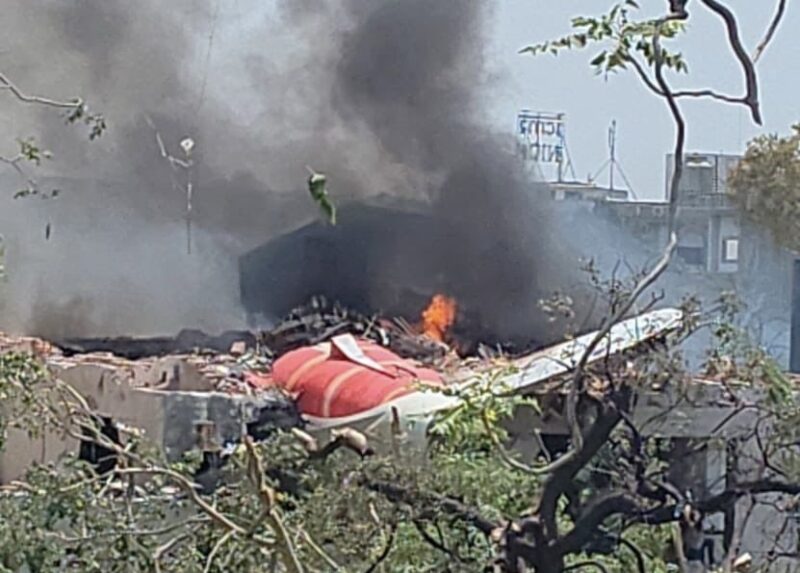
Fuel Cutoff Error Under Scrutiny
At the heart of the investigation is a sudden transition of both engine fuel control switches from “RUN” to “CUTOFF” shortly after takeoff. According to flight recorder data, this occurred as the aircraft reached its maximum recorded speed of 180 knots at 08:08:42 UTC.
“The aircraft achieved the maximum recorded airspeed of 180 Knots IAS at about 08:08:42 UTC and immediately thereafter, the Engine 1 and Engine 2 fuel cutoff switches transitioned from RUN to CUTOFF position one after another with a time gap of 01 sec,” states the AAIB report.
This action, typically reserved for ground procedures, abruptly shut down fuel supply to both engines, causing them to lose thrust during a critical phase of flight.
The cockpit voice recorder captured a brief, startling exchange between the two pilots.
“One of the pilots is heard asking the other why did he cutoff. The other pilot responded that he did not do so.”
However, the report does not clarify which pilot moved the switches or whether it was accidental or unintentional. During the takeoff, the co-pilot was flying the aircraft while the captain was in the monitoring role.
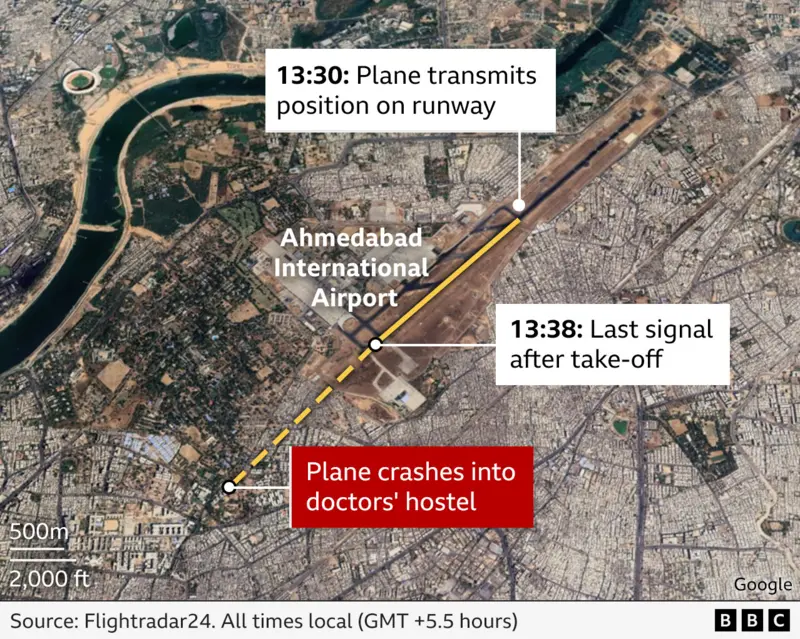
Failed Engine Recovery
Moments after the fuel cutoff, the pilots reversed the switch positions, attempting to restore engine functionality. The Boeing 787’s Full Authority Digital Engine Control (FADEC) system automatically began the ignition and fuel introduction sequence.
“When fuel control switches are moved from CUTOFF to RUN while the aircraft is inflight, each engine’s full authority dual engine control automatically manages a relight and thrust recovery sequence,” the report explains.
However, only one of the engines showed partial signs of recovery.
“Engine 1’s core deceleration stopped, reversed and started to progress to recovery,” while “Engine 2 was able to relight but could not arrest core speed deceleration,” the report said.
Despite these efforts, it was too late. The plane had already begun to lose altitude, crossing the airport perimeter wall before slamming into the nearby BJ Medical College and Hospital hostel complex, killing dozens of people on the ground.
Emergency Response and Final Moments
Seconds after the fuel switches were toggled back to RUN, the cockpit recorder captured the final distress call.
“MAYDAY MAYDAY MAYDAY,” one of the pilots shouted.
ATC attempted to contact the aircraft’s callsign but received no response. The air traffic controller reportedly watched helplessly as the aircraft crashed in the distance.
Airport CCTV footage confirmed that the Ram Air Turbine (RAT), an emergency backup power source, was deployed during the aircraft’s brief initial climb. However, this measure was not sufficient to stabilize or avoid the crash.
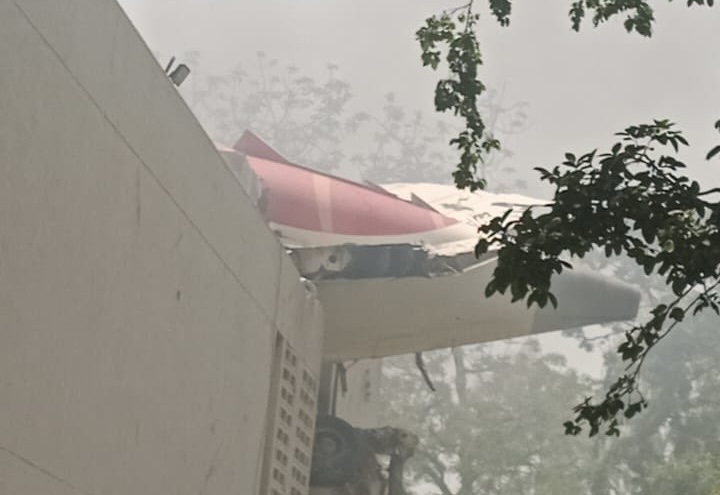
Wreckage and Bird Strike Theory Dismissed
In the aftermath, AAIB investigators secured and examined the wreckage. Both engines were retrieved and quarantined for further analysis. Components deemed significant were also isolated for detailed inspection.
“Wreckage site activities including drone photography and videography have been completed,” the report confirmed.
Crucially, the preliminary report addressed speculation that a bird strike may have caused the crash. However, surveillance footage and radar data show no signs of bird activity along the flight path.
“No significant bird activity is observed in the vicinity of the flight path,” the report noted.
This effectively rules out bird strike as a contributing factor.
Pilots’ Experience and Background
The captain of flight AI171 was a 56-year-old veteran with more than 15,000 flying hours, while the co-pilot was a 32-year-old with 3,400 hours. The First Officer was the pilot flying (PF) during takeoff, while the captain served in a supervisory capacity.
The report does not yet draw conclusions about potential pilot error but highlights the focus on the unexpected fuel switch movement.
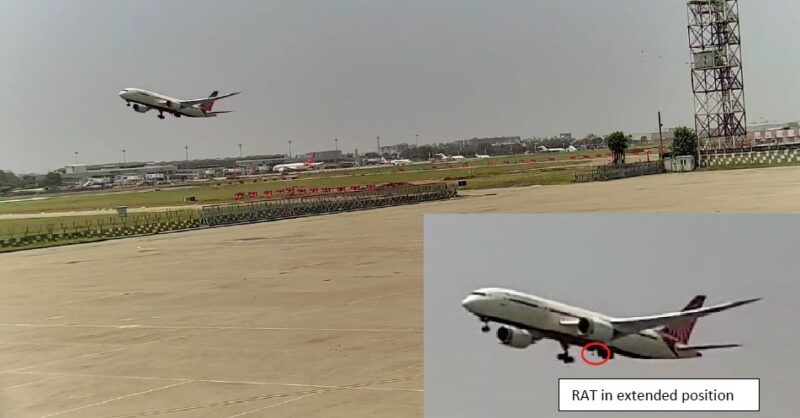
No Aircraft or Engine Fault Identified
Significantly, the AAIB has found no immediate technical fault with the Boeing 787-8 aircraft or its GE GEnx-1B engines.
“At this stage of investigation, there are no recommended actions to B787-8 and/or GE GEnx-1B engine operators and manufacturers,” the report stated, suggesting that mechanical or systems failure is not currently suspected.
The preliminary report points toward human factors and cockpit management as likely central issues in the tragedy. The AAIB continues to investigate the fuel cutoff event, the subsequent engine relight attempts, and the decision-making dynamics between the flight crew.


